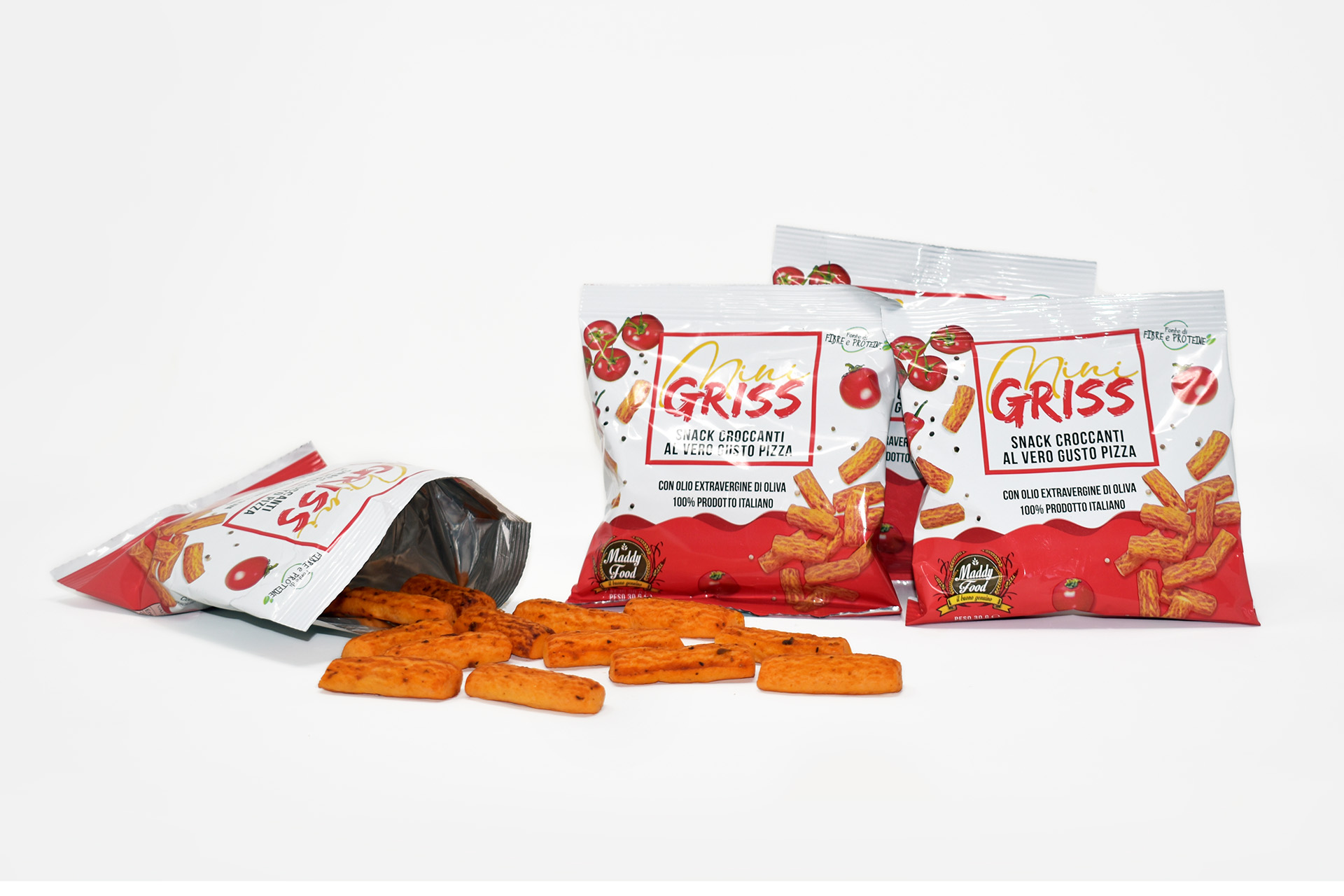
Packaging represents the most important way to create what is called "product identity". In fact, it contains all the useful and significant information and is the first, and sometimes the only, vehicle for its affirmation.
In a market where there are many products, more or less similar (if not even the same), the packaging, the graphics, the brand are called upon to create an identity, an "added" value, a
distinctive history to determine belonging and recognisability.
Digife was responsible for the design and creation of food packaging for a particular bakery product suitable for distribution in various sectors such as large-scale retail trade, vending machines, bars, etc., following design phases aimed at selling the product.
Now a short list of the steps that lead to the creation of packaging.
-
Packaging analysis and research
Acquiring information on the company, product, consumers and competitors is the first fundamental step to correctly set up the work. Focus of the research study:
– Material characteristics of the product (dimensions, weight, volume, shape, types of materials used, …)
– Intangible characteristics of the product (price, market positioning, sales channels, type of product, product category, …)
– Distribution methods (product display and distribution methods, e.g. sales in physical stores, vending machines, displays, etc…)
– Characteristics of the final consumer (ways and moments of consumption/use, uniqueness of the product and target audience; e.g. if a product can be used at different times or ways)
– Regulations (any legal requirements that the packaging must comply with; e.g. nutritional tables in the case of foods and drinks, indication of the age of use in the case of toys, obligation to specify technical information, ...)
– Competitors (who are the competitors, what are the material and immaterial characteristics of their products, what type of packaging they use, what type of communication they use, …) -
Definition of creative concepts and creation of graphic solutions
Moodboard drafts are designed that summarize the different graphic styles and give an idea of how the final design could turn out, the starting point for designing the graphics.
-
Prototype design
Prototype as realistic as the final design and serves to verify whether the creative choice actually works and is effective compared to the competitive context.
-
Perception test
The phase that precedes the completion of the project is a brief survey of consumers, their perception and preferences, a test to verify effectiveness.
-
Refining the design
We make the necessary corrections and changes to complete the main graphics.
-
Executive files and printing
The last phase of the project that ensures that what has been designed actually corresponds, once printed, to what ends up on the shelf. It involves the preparation of the executive files, respecting all the instructions received from the chosen printer, and the coupling necessary for the correct printing of the materials.









